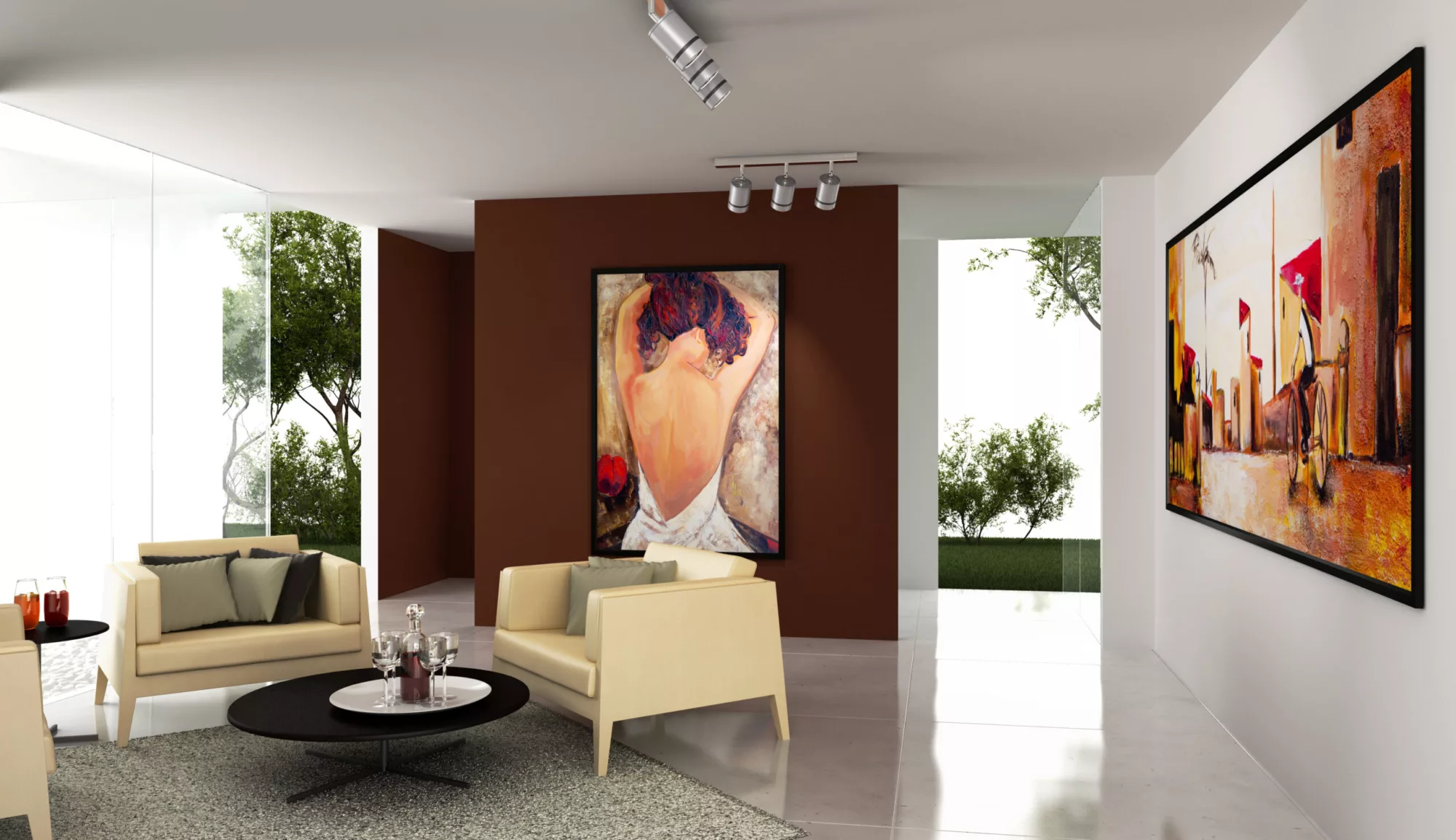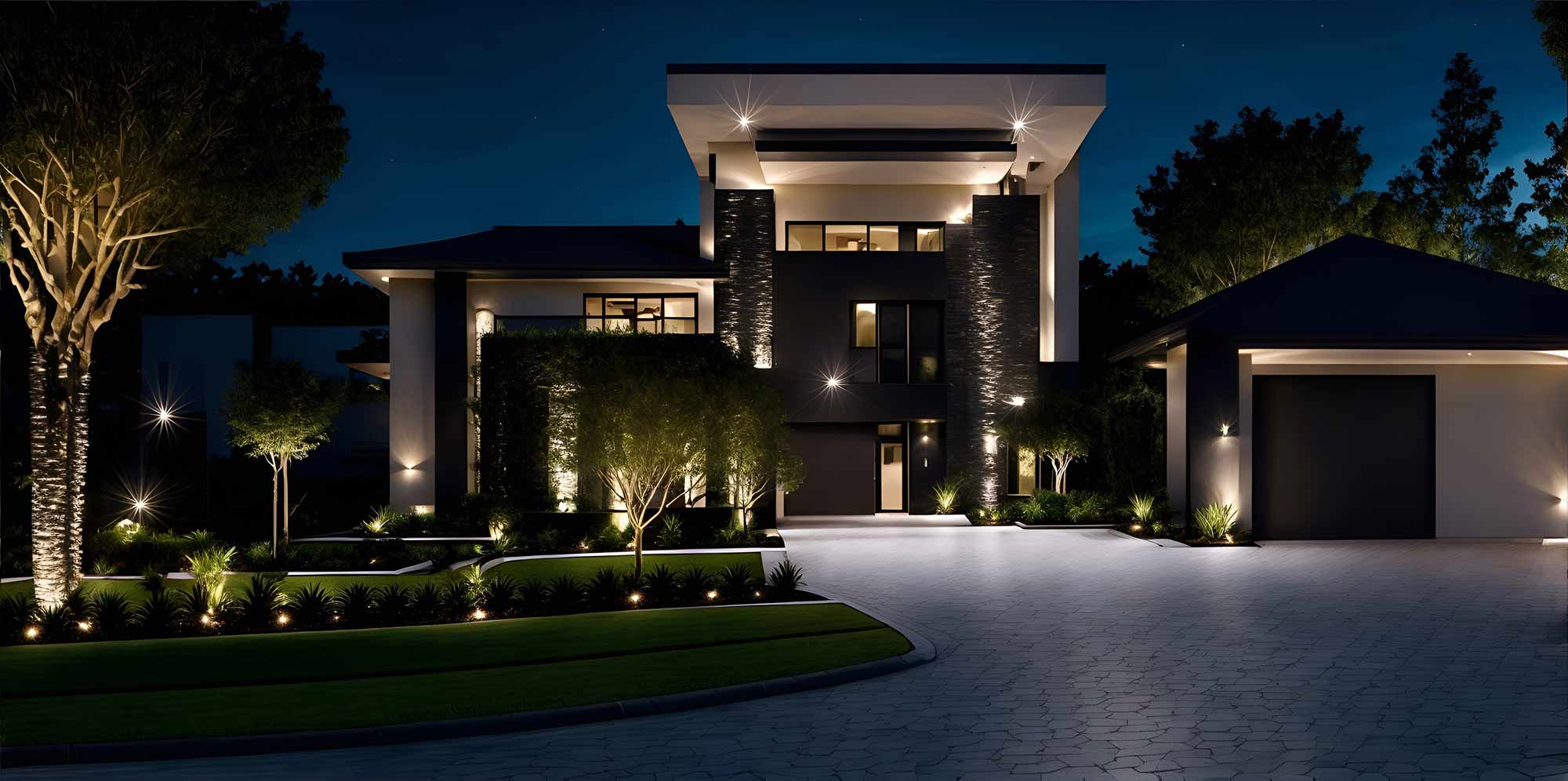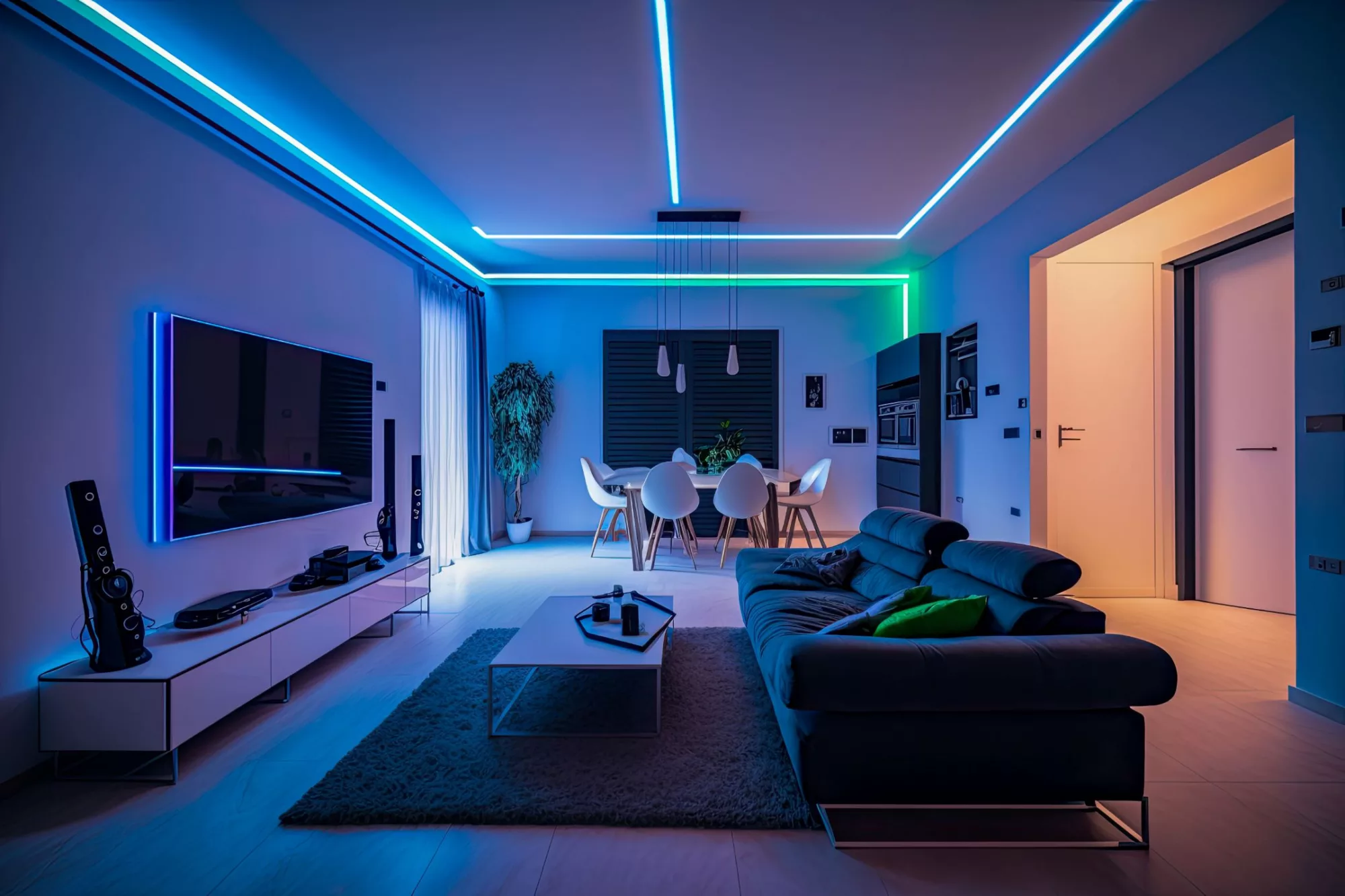Low voltage landscape lighting became prominent in the residential market during the 1950s. This period marked the beginning of its widespread adoption for home...
Art & Photo Gallery Walls
When buying priceless art, you and your guests should be able to admire every single detail of your art within your home. Hanging the art in the right place is one thing. But to make your art shine, you’ll need the right lighting design.
Unfortunately, art is very often ignored in the construction process and incorporating artwork and lighting design into the design of project at the initial stage is critical. To make the right decision, you need to determine whether you want the art to be a focal point of the room or just be a piece within it.
Beautiful artwork can change an entire space, and the proper application of light is vital for the overall success of the design. There is no one right solution, but I am here to give you a hand to make the right lighting design decisions for your interior.
OK, let’s not beat around the bush.
Once you have your artwork, you’ll want to make sure it lasts. That’s why the first thing to focus on is conservation.
1. Avoid Direct Natural Lighting
If you don’t want the art to fade over time, avoiding direct exposure to sunlight is essential. UV rays will damage your artwork. In lighting design, natural lighting plays a crucial role; however, we don’t want to use daylight to make our art shine.
2. Choose The Right Type of Lamp
Artificial light can also damage your artwork in the long term. Lamps that generate heat will gradually burn the material. So, if you want to use halogen lights, you must keep a safe distance between the lamp and the artwork to ensure your piece will not be damaged. To ensure the quality of your artwork investing in premium lighting will keep it best. The safest solution for your artwork is LED lamps that emit no UV or heat. Invest in good lighting from the beginning to avoid spending a lot of money on art restoration in the future.
Now that you know what not to do, let’s move to the part where you will find out what is recommended.
3. Surface Vs. Lighting
Keep the surface in mind if you plan to put your piece behind glass.
In case your art is not behind glass, you still have to consider the technique used to create the piece of art. For example, acrylic or oil paintings have texture and layers; therefore, you must ensure your lights will not produce shadows on the picture.
4. Framing
Framing is worth considering if you are planning to use a picture light. Choose the frame that will support the fixture. You don’t have to worry about the frame when your lights are installed on the wall or ceiling.
5. Ceiling Mounted Lights
This solution is best when your main goal is to make the art, not the lighting fixture, the main focus of a room. When a fixture is adjusted to a 30-degree angle, it allows the lights to illuminate the artwork’s center in most cases. Why is this so important? Let me explain that by using an example. If you place the fixture at a 10-degrees angle, you will create long shadows below the painting. And when you go back too far from the painting, let’s say around 50 degrees, you will likely get a reflecting glare.
6. Track Lighting
Art is not limited to only paintings but can also be a sculpture or art installation. Track lights work perfectly when you have art on the shelves or above your fireplace, and you love to re-arrange the display. You can adjust and move track lights whenever you need them without the need to drill into the wall or ceiling. This is the choice that gives you the most flexibility. The con to track lights is that they might not be as beautiful as ceiling lights.
7. Wall Washers
You can find a variety of wall washers on the market; recessed, surface-mounted, and track-mounted. Wall washers can be installed on the walls, ceiling, or floor. And when it comes to illuminating the art, you do not have to light the art itself. That’s a noteworthy solution if you have more than one painting or picture on the wall. You can illuminate the entire wall using one fixture instead of installing one for each piece of artwork.
8. Picture Lights
Picture lights are either mounted on the wall or on the picture frame to light up individual art pieces. Putting a light source close to the art provides an intimacy between you and the artwork. Those lights will encourage you to stay in front of the picture for a while and take a closer look at all of the details. If your art’s beauty is in its intricate details; that’s the solution. Keep in mind that picture lights are decorative, so match them with the interior design. The good thing is that you don’t need to cut walls to install those lights; however, you will need an outlet to plug them in.
Patrycja Glod
Lighting Design Engineer
Reading time: 3 min 12 sec




